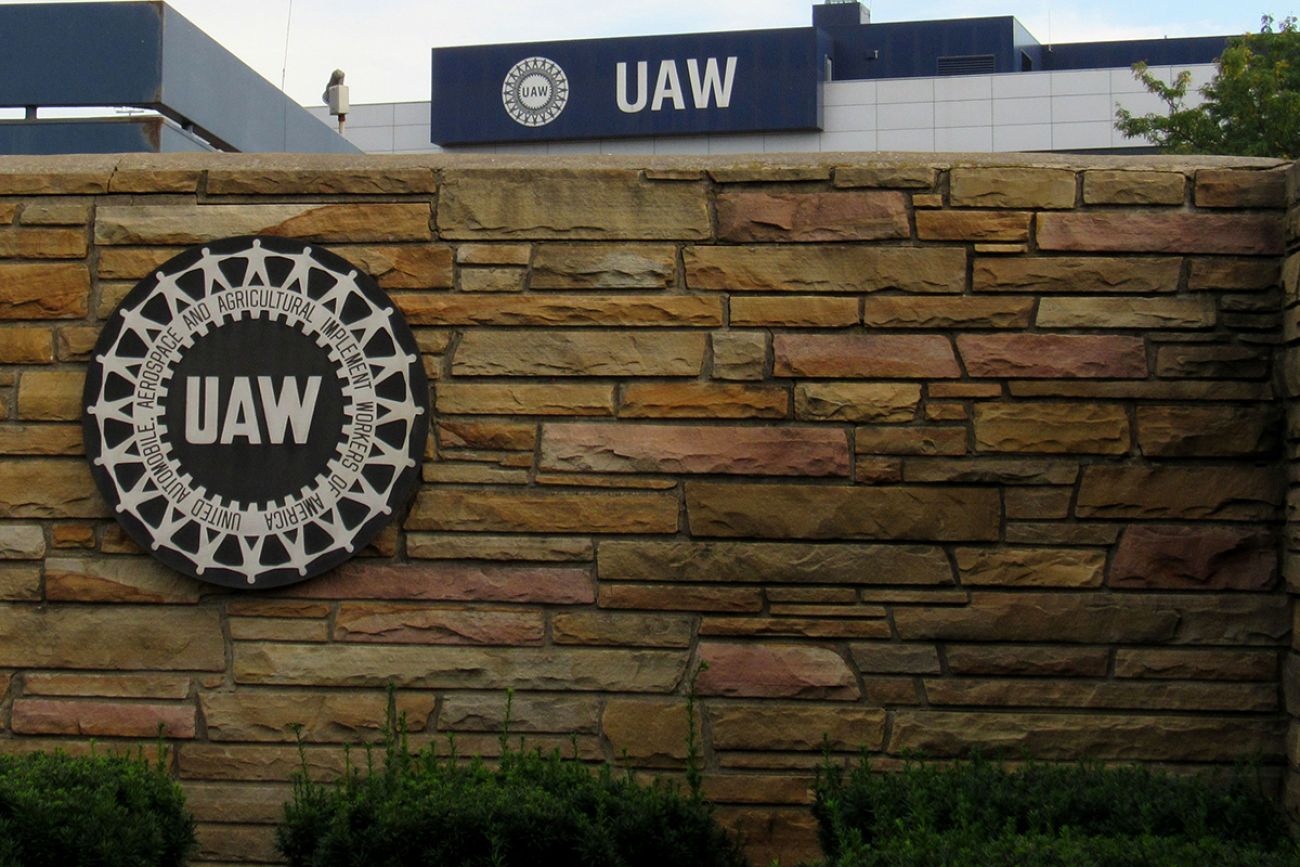UAW-automaker standoff prompts worries over Michigan's place in new economy

- Michigan business leaders worry about risks to the state’s auto industry with a strike or a financially unsustainable settlement
- UAW demands could increase fixed costs, even as worker wage growth has been stagnant
- Big Three market share may hang in the balance
Michigan business leaders watched with a sense of urgency as the deadline between the United Auto Workers and the Big Three legacy auto companies passed and the union launched a strike early Friday, but their concerns went far beyond immediate effects of a walkout.
The future of Michigan’s signature industry in the state loomed as their top issue.
Any outcome on the contract leaves uncertainties for the automakers, who face significant global competition for customers at a time when the platform shift to electric vehicles is both expensive and, so far, unprofitable, they said.
Related:
- Strike likely; UAW plans staggered walkouts to ‘keep companies guessing’
- UAW strike 2023 update: Teamsters will honor UAW strike; GM CEO makes offer
- By the numbers: How many UAW members in Michigan, how much would strike cost
“The goal here is to have a sustainable agreement for the workers to keep their jobs in the future and the automakers keep making vehicles,” Patrick Anderson, CEO of Anderson Economic Group in East Lansing, told Bridge Michigan.
UAW wage demands “are almost certainly likely to be incorporated in a plausible settlement,” Anderson said.

However, UAW requests for benefits like 40 hours of pay for a 32-hour workweek, pension restoration, and keeping workers on payroll after a plant closure to do community volunteer work all raise concerns about how competitive an automaker can be after absorbing those additional costs.
“My biggest worry isn't that we have a strike, it’s that we have an unsustainable settlement,” Anderson said.
The UAW, representing about 150,000 workers across the U.S., started with contract demands that included:
- 40 percent wage increase over the next four years, 46 percent when compounded
- Cost-of-living increases
- 32-hour work week with 40-hour pay
- Set cap on the number of temporary workers, and convert them to full-time seniority employment after 90 days
- More paid time off and additional holidays
- Job security through what is called the Working Family Protection Program, which includes the right to strike over plant closures
- Significantly increase retiree pay
Each automaker — Ford Motor Co., General Motors and Stellantis — has made offers and counteroffers, including updated ones after UAW President Shawn Fain said Wednesday that a strike appeared likely. GM’s pay raise offer Thursday reached 20 percent over four years, the highest among all three.
Top pay for an assembly plant worker has been $32 per hour, with the union seeking a raise to $47.14. Newer hires start at under $20 per hour and can spend eight years climbing to the top tier of pay and benefits. And temporary workers, used to fill open shifts, start at under $17 per hour, or about $35,000 per year.
Anderson, who led a report estimating that a 10-day strike could cost the U.S. over $5 billion, said Michigan will benefit from both automaker profitability and the companies paying workers well. Auto-parts manufacturing pay in Michigan was an average $27.66 an hour in 2006, then $28.06 an hour in 2022, just a 1.4 percent increase over that time. Average pay fell to a low of about $21 per hour in 2016.
The slow growth shows a reason for the UAW workers’ focus on pay at a time when auto industry profits rebounded, with GM, Ford and Stellantis all forecasting at least $10 billion in profits during 2023.
Each company also is in the midst of transforming their businesses to electrified platforms, investing billions in new and retooled factories, including EV battery plants.
Despite the investment, GM forecasts no EV profits by 2025, as it counts on increased production and efficiency, along with at least $2 billion in cost-cutting. Ford CEO Jim Farley is looking at a similar timeline, he told analysts on May 2.
The Big Three automakers went into strike talks with about a 40 percent market share as foreign auto companies focus on increasing sales in the U.S., including from EVs. Their market share was about 54 percent in 2006, ahead of the Great Recession.
“It would be penny wise and pound foolish to destroy their ability to compete with the other automakers around the globe,” said Brian Calley, president and CEO of the Small Business Association of Michigan. “If you make the products themselves uncompetitive in terms of cost, then the long-term benefit is negated. There's a lot of downside there.”
The average cost of a new vehicle in the U.S. topped $48,000 in March, and some experts predict it will cross the $50,000 threshold soon. At the same time, the average price for an EV — which makes up about 7 percent of the market — is $64,000.
“It's difficult to imagine the market being able to bear a much higher cost,” Calley said.
Fewer sales among the Big Three could then lead to factory contractions, something that already may be planned. Stellantis, for example, told the UAW that it wants permission to shutter 18 facilities, Fain said Wednesday.
The spiral starting with fixed costs for the automakers means “you have the potential to really take the market to a much smaller place,” said Jeff Schuster, president of Troy-based Global Vehicle Forecasts at LMC Automotive.
“And at the end of the day, that means less workers. So this could end up backfiring.”
GM CEO Mary Barra seemed to raise similar issues in her letter addressed to the company’s manufacturing workers on Thursday, as GM made what it called a “historic proposal” to the UAW negotiators.
“We’re at a crossroads on our path to building a company that can sustain all of us for decades to come,” Barra wrote, saying the deal — including a 20 percent wage increase and boosts to retirement plans and retiree health care — prepares the company for the future.
Failure to balance costs with sales and profitability could leave the automakers once again vulnerable to massive cuts, including potential bankruptcy, Anderson said. That’s what happened in the Great Recession when legacy costs were not sustainable.
“Let’s not repeat history,” Barra wrote Thursday. “We’re focused on the future, and our growth strategy.”
Michigan is fortunate to remain the headquarters of the North American automobile industry, Anderson said, and it has greatly benefited from being the home of General Motors, Ford and Chrysler as well as numerous suppliers.
“The auto industry is one of the most valuable high tech and profitable highway generating industries in the entire world,” he said. “And most countries would give a lot of money to have what we have in the state of Michigan and we should nurture it and try to make it grow.”
Business Watch
Covering the intersection of business and policy, and informing Michigan employers and workers on the long road back from coronavirus.
- About Business Watch
- Subscribe
- Share tips and questions with Bridge Business Editor Paula Gardner
Thanks to our Business Watch sponsors.
Support Bridge's nonprofit civic journalism. Donate today.
See what new members are saying about why they donated to Bridge Michigan:
- “In order for this information to be accurate and unbiased it must be underwritten by its readers, not by special interests.” - Larry S.
- “Not many other media sources report on the topics Bridge does.” - Susan B.
- “Your journalism is outstanding and rare these days.” - Mark S.
If you want to ensure the future of nonpartisan, nonprofit Michigan journalism, please become a member today. You, too, will be asked why you donated and maybe we'll feature your quote next time!




